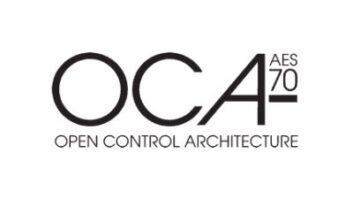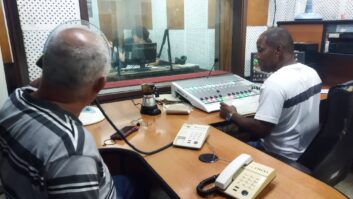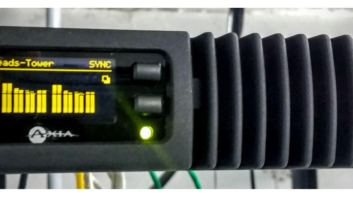One in a series of interviews with industry thought leaders about what lies ahead in 2018.

Jay Tyler is director of sales for manufacturer Wheatstone.
Radio World: What does Wheatstone expect the 2018 radio broadcast business environment to be like, based on what you’re hearing about cap-ex budgets, project plans or other factors?
Jay Tyler: We have a lot of projects on the books going into 2018, probably as much as we’ve ever had. We are still seeing sustained growth in all sectors and we owe much of that to the changes going on in radio.
In a few years, we might see an entirely different way of operating—regional centers, for example. All that is going to be leveraged off of IP. And, fortunately, one of the benefits of IP audio compared to the traditional system is you don’t have to do it all at once. We’ve never really run our business on broadcasters’ cap-ex budgets for this reason. In the past, broadcasters budgeted hundreds of thousands of dollars for a new project, and then did it all over again when things changed. They don’t necessarily have to do that now; they can add onto their existing IP infrastructure. They are hanging onto their equipment longer and making changes as they occur. So, while we are experiencing a second wave of audio over IP project buildouts, we are also adding more and more functions and devices onto those studios that have been IP networked for some time.
Generally, the major market groups are using virtual tools like our ScreenBuilder to add on more customized workflows to their studios, and the smaller and mid-market groups are streamlining their stations with IP connectivity and routing, many for their first time.
RW: We see headlines about the debt burdens of several of the biggest U.S. radio broadcasters. Do those debt burdens affect spending with your company? What impact have your clients felt?
Tyler: It’s interesting, because the last round of consolidations involving our customers — iHeartMedia, Entercom, Beasley and CBS — didn’t really take IP audio expansion off the table. It might have even sped it up.
And yes, we understand that there’s debt, but stations are still having to deal with leases that end and so forth. We work with broadcasters that don’t necessarily have the budgets for everything they want today, but we try to give them the upward mobility they’ll need to eventually get into their ultimate studio. After 43 years in the broadcast business, we’ve seen our share of market ups and downs, and we constantly try to anticipate how our products will be used. But it’s never been a one-size-fits all. That’s why Wheatstone has a range of product options—audio processors, consoles and networks.
RW: Which regulatory changes or types of projects are likely to be the drivers of cap-ex spending this year?
Tyler: [Jan. 8] marks the official end of the main studio ruling. That’s going to change things for some of our customers, and we’re developing new products to help them. We’re a broadcast-only company, so we’re very interested in AM revitalization, FM translators, repack, streaming, etc. What’s important to one broadcaster might not be important to another, but overall I’d say that the mission is pretty much the same as it’s always been. It’s the tools that have changed, and that’s where manufacturers like Wheatstone can make the biggest difference.
RW: What else should we know?
Tyler: Of all the changes that are taking place today, the one that stands out the most is the expanding role of engineers. I’m continually amazed at the workload being carried by engineers — not just the number of tasks they perform, but the varying types of things they’re managing.












